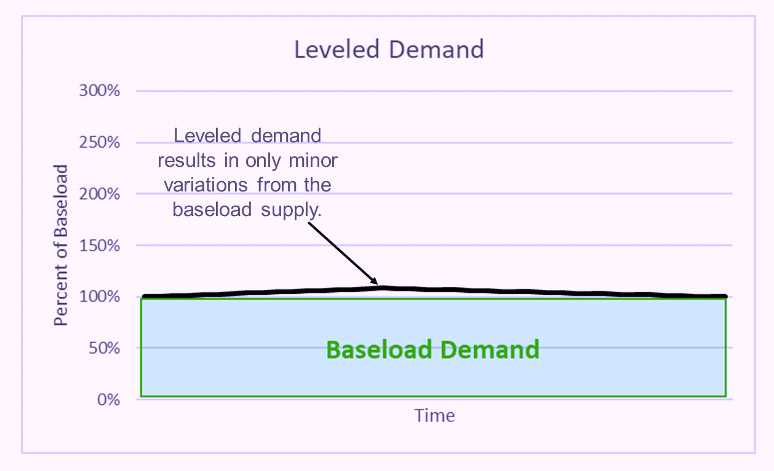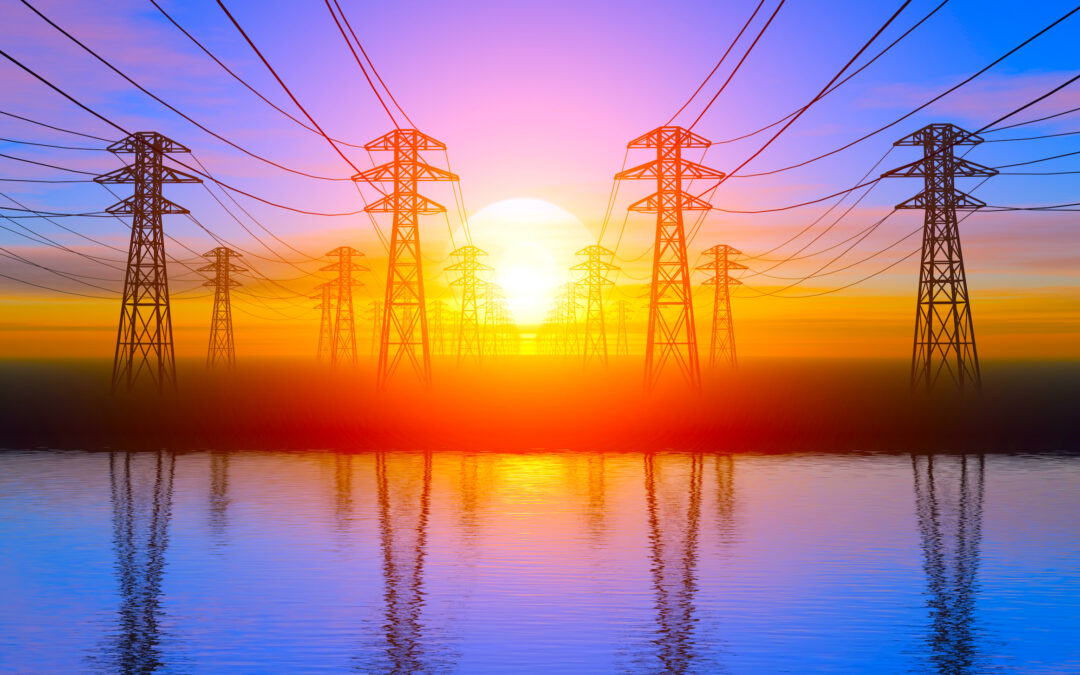Environmental sustainability is top of mind for many businesses these days. And equipment-asset-dependent companies in the manufacturing, process, mining, and other heavy industries are no exception. The American Society of Testing & Materials (ASTM) E60.13 committee is busy developing standards for sustainable manufacturing. These are supported by more general ISO standards in the 14000 and 50000 families for energy management. Equipment-asset-management professionals play a vital role in achieving these sustainability objectives. Over the past several years, I’ve written extensively about this topic in The RAM Review (see links to several articles below).
Click These Links For Example Sustainability-Focused Articles
“ISO 55000 And ISO 14000: Understand Their Connections And Interdependencies,” (Sept. 5, 2020)
“Baseline Your Sustainable Manufacturing Practices (Then Get To Work),“ (Sept. 26, 2020)
“Meet the OECD Sustainable Manufacturing Toolkit,” (Aug. 8, 2020)
First principles for sustainable manufacturing are diagramed in Fig. 1, which was itaken from ASTM E2986, Standard Guide for Evaluation of Environmental Aspects of Sustainability of Manufacturing Processes. Energy and resources serve as inputs to some process or series of processes, that result in useful output and emissions to air, water, or solid waste.
The input resources vary from industry to industry, but energy is common. Heavy industry accounts for 25% to 33% of all energy consumed and associated greenhouse-gas (GHG) emissions. Accordingly, any serious conversation about confronting climate change must include energy usage in manufacturing and the other heavy equipment-asset-intensive industries. And, in particular, that discussion must focus on energy.

Fig. 1. The simple, but elegant input-output diagram from ASTM E2986.
ENERGY MANAGEMENT: BEYOND QUANTITY
When one thinks of energy management, the quantity of energy consumed immediately comes to mind. We normally think of energy in terms of kilowatts (kW) or kW hours (kWh), British thermal units (BTUs), Joules, etc. But make no mistake: Although energy quantity is an important point, there is much more to sustainable energy management, including:
-
-
- timing of use
- energy form
- location
- transformation mechanism(s)
- quality
-
We’ll introduce timing and form in this issue of The RAM Review. Next week, we’ll discuss location, transformation mechanisms and quality. After that, we’ll dive deeper into specific topics associated with energy timing, form, location, transformation, and quality, with a focus on sustainable manufacturing.
TIMING OF ENERGY SUPPLY AND DEMAND
Managing energy (and its associated GHG emissions) would be much easier if the demand was constant every hour of the day and every day of the year. But it’s not. We have periods in each day and days in the year during which the demand for energy swings wildly. We also have periods during which various supply mechanisms vary wildly. This timing is of particular importance with electrical energy. The market for electricity is, for the most part, real-time. The energy demanded must by equaled by the energy supplied to avoid “blackouts” (during which all or some consumers lose electric power) or potentially destructive “brownouts” (during which the supply voltage is reduced.)
Generally speaking, electrical-energy demand is at a minimum at night when people are sleeping, stoves and ovens are not operating, lights are turned off, road and air traffic is lower, and some manufacturing plants are shut down for the day. During these periods, the baseload supply of electricity meets all demand.
However, as people wake in the morning, switch on lights, cook breakfast, shower, do laundry, etc., the demand increases into what’s termed “intermediate demand.” Timing of “peak demand” can vary: In warmer climates, it’s often between about 4 p.m. and 7 p.m., when people are getting home from work, turning on air conditioners, cooking dinner, etc. Then, at the end of the day, when everyone is slowing down, the demand settles back down (Fig. 2).
 Fig. 2. Change in demand for energy during the course of a normal day.
Fig. 2. Change in demand for energy during the course of a normal day.
To match intermediate- and peak-demand requirements, the energy supplier must engage intermediate and peak generation, the cost of which is usually much greater than the cost of supplying baseload energy. Moreover, intermediate- and peak-energy supply tends to result in higher GHG emissions per kWh. For example, peak energy is often supplied via aero-derivative generators that are often called “spinning reserve,” because they can be brought online very quickly. These units effectively use jet engines to drive generators. Without energy-recovery systems, their efficiency can be quite low.
A common complaint about sustainable electrical energy sources (most notably solar and wind energy) relates to timing. Simply stated, there’s no energy when the sun doesn’t shine and if the wind’s not blowing.
Timing is a major reason for the popularity of chemical-energy sources such as petrol (gasoline), fuel oil (diesel), kerosene, etc. That type of energy is stored in hydrocarbon molecules and conveniently converted into heat or mechanical energy on demand. Storing electrical energy has proven to be more complicated.
Batteries, for instance, store electrical energy but efficiencies are lost. Furthermore, battery manufacturing requires large quantities of mined materials, such as lithium, nickel, and cobalt. And the mining of these materials come with its own environmental consequence.
If the demand could be leveled to minimize intra- and inter-day variation, the sustainable supply of electrical energy would be a more manageable proposition (Fig. 3). Achieving such levels of demand is not realistic in the near term. Thus, we must turn to alternative means of storing electrical energy when it’s plentiful so that it can be utilized during periods of intermediate and peak demand. Managing the timing of energy supply and demand may be the most challenging aspect of achieving a future state of sustainable energy management.
 Fig. 3. In a perfect world, the demand for energy would be leveled
Fig. 3. In a perfect world, the demand for energy would be leveled
to match the baseload supply.
ENERGY FORM
The form in which energy exists significantly impacts its usability and sustainability. Chemical energy in the form of petrol, diesel, and kerosene is very convenient because it’s concentrated into a liquid state. Take diesel, for example. Each gallon contains about 140,000 BTUs of energy, which is equal to about 40 kWh. That’s a lot of energy concentrated into a relatively small volume. Natural gas is another hydrocarbon energy source that’s in a gaseous form. It’s transported and distributed through a network of pipelines and compressors to points of use, such as electric-power-generation plants, kilns and ovens, private homes, etc. If natural gas is cryogenically liquified, it can be transported overseas via shipping vessels.
Our existing energy-distribution system is designed to supply energy stored in liquid or gas form. Petrol, for instance, is delivered to gas stations where it is stored (and eventually replenished) so we can conveniently pump it into our vehicles. A 20-gallon tank of petrol stores about 700 kWh of energy to be used at the operator’s discretion. That form of energy is not just convenient: The existing infrastructure for its distribution is well established and very robust.
Of course, the challenge we face with liquid and gas hydrocarbons is the release of carbon dioxide (CO2), methane (CH4) and other GHG emissions. In reality, its not the volume of carbon that we’re pouring into the environment, Rather, it is the age of that carbon.
The petrol that we’re combusting is primarily solar energy from millions of years ago that’s been stored as crude oil. Once burned, the stored carbon is released into the atmosphere, which is causing GHG levels to rise dramatically. Carbon dioxide levels had hovered around 250 ppm for 800,000 years or so. They started to spike during the Industrial Age, when we began burning a great deal of stored carbon in the form of coal and crude-oil derivatives. To be precise, levels have really spiked since 1950. Today, atmospheric CO2 sits at 420 ppm and is rising.
To combat the localized burning of fossil fuels in our cars, trucks, vans, and buses, electrical vehicles have become popular. Turning to these types of vehicles can dramatically reduce the carbon impact of powering our transportation needs (in some cases). For cars, it’s feasible to store electrical energy in battery banks. But battery storage of electrical energy isn’t a practical option for aircraft.
We must also consider how electrical energy for powering electrical vehicles is generated. If it is generated by burning coal with no carbon capture or storage mechanism, the reduction in carbon emissions versus that of gasoline is less. If, however, the energy required to power these vehicles is generated via solar, wind, hydro, and/or nuclear power and other near carbon-free methods, the reduction in GHG emissions is significant.
In addition, we must also consider our energy-distribution systems. Because that distribution infrastructure is designed to energize movement, utilizing energy in a liquid form, the widespread adoption of electrical vehicles will require a significant change in distribution systems that enable the charging of the vehicles. This can be mitigated, to some extent, through the reclaiming of kinetic energy, solar charging panels, etc. To a great extent, however, widespread adoption of electric vehicles will significantly tax our already vulnerable electrical transportation and energy-distribution grid system.
CONCLUSIONS
Energy is at the center of our quest for an environmentally sustainable future (including sustainable manufacturing). Timing of use, form, location, transformation mechanism(s) and quality all impact our ability to create a sustainable energy and manufacturing future.
This week, we discussed some basics related to energy timing and form. Next week, we’ll address location, transformation mechanism(s), including entropic losses, and energy quality. In future issues of The RAM Review, we’ll dive deep into opportunities that help us manage these factors to improve energy management and sustainability.TRR
ABOUT THE AUTHOR
Drew Troyer has over 30 years of experience in the RAM arena. Currently a Principal with T.A. Cook Consultants, a Part of Accenture, he was a Co-founder and former CEO of Noria Corporation. A trusted advisor to a global blue chip client base, this industry veteran has authored or co-authored more than 300 books, chapters, course books, articles, and technical papers and is popular keynote and technical speaker at conferences around the world. Drew is a Certified Reliability Engineer (CRE), Certified Maintenance & Reliability Professional (CMRP), holds B.S. and M.B.A. degrees. Drew, who also earned a Master’s degree in Environmental Sustainability from Harvard University, is very passionate about sustainable manufacturing. Contact him at 512-800-6031, or email dtroyer@theramreview.com. The opinions expressed in Drew’s articles are his own, not those of his employer.
Tags: reliability, availability, maintenance, RAM, environmental sustainability, sustainable manufacturing, energy efficiency, safety, climate change, sustainable investment, sustainability performance, greenhouse-gas emissions, American Society of Testing and Materials, ASTM, ASTM E60.13 technical committee, ASTM E2986, ISO 50000, ISO 14000



